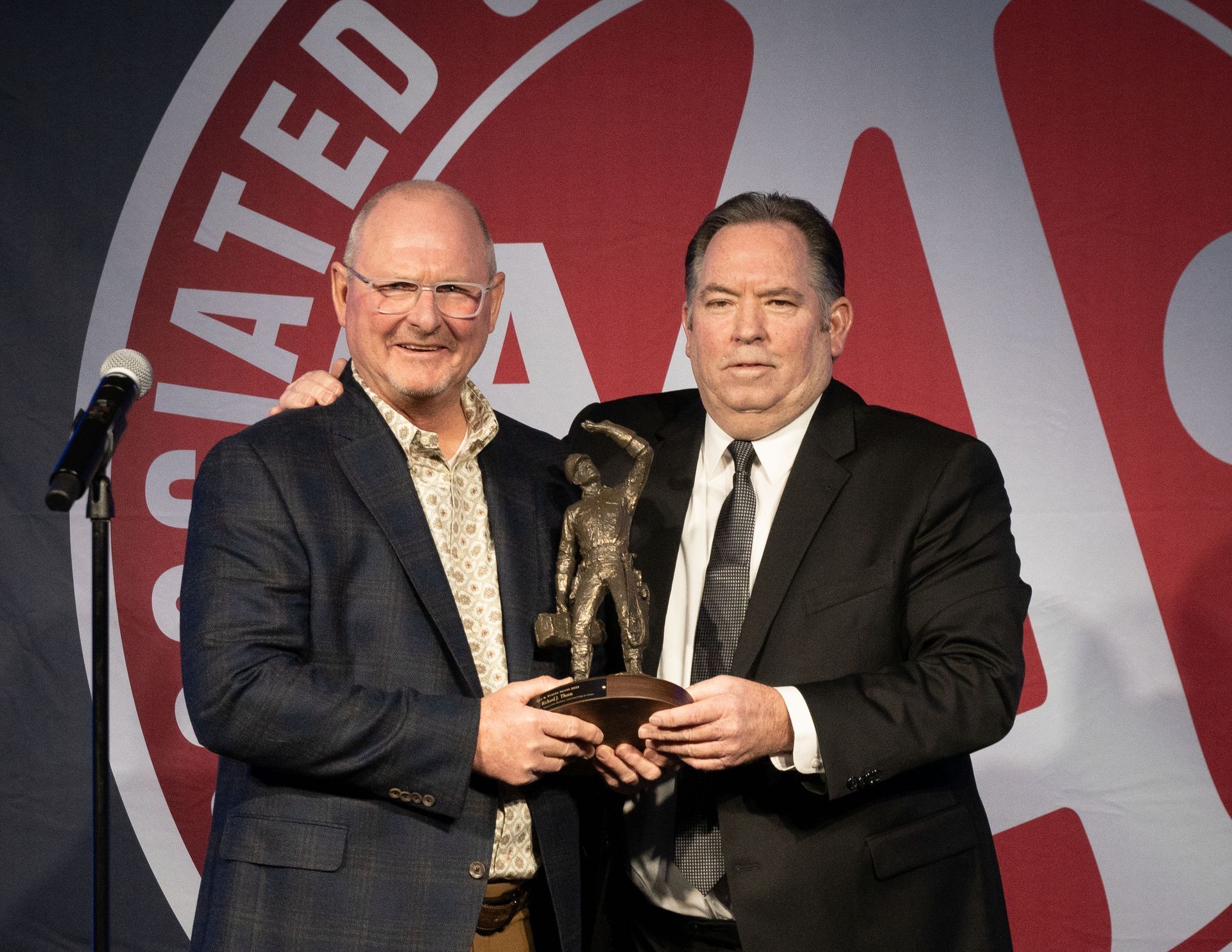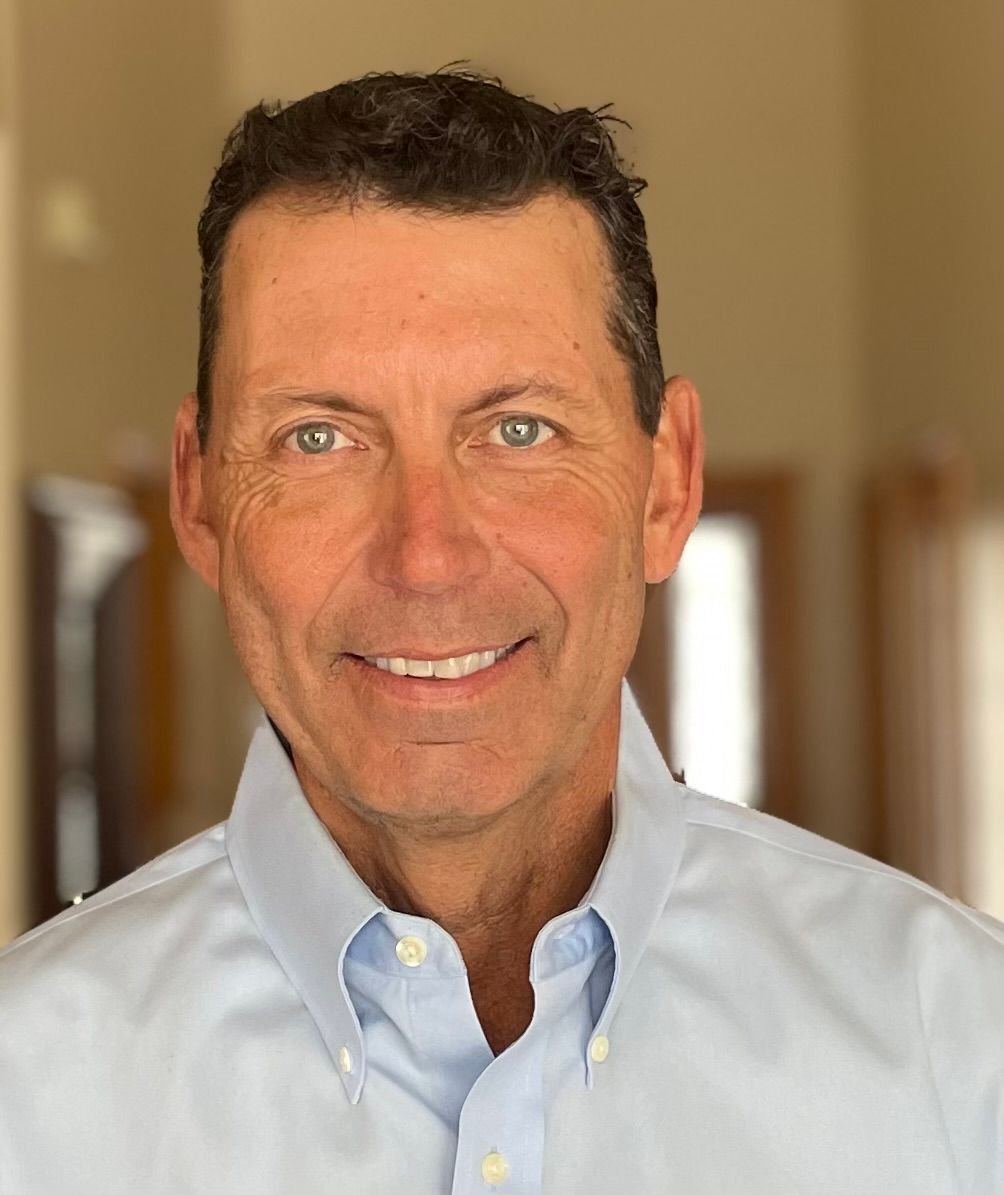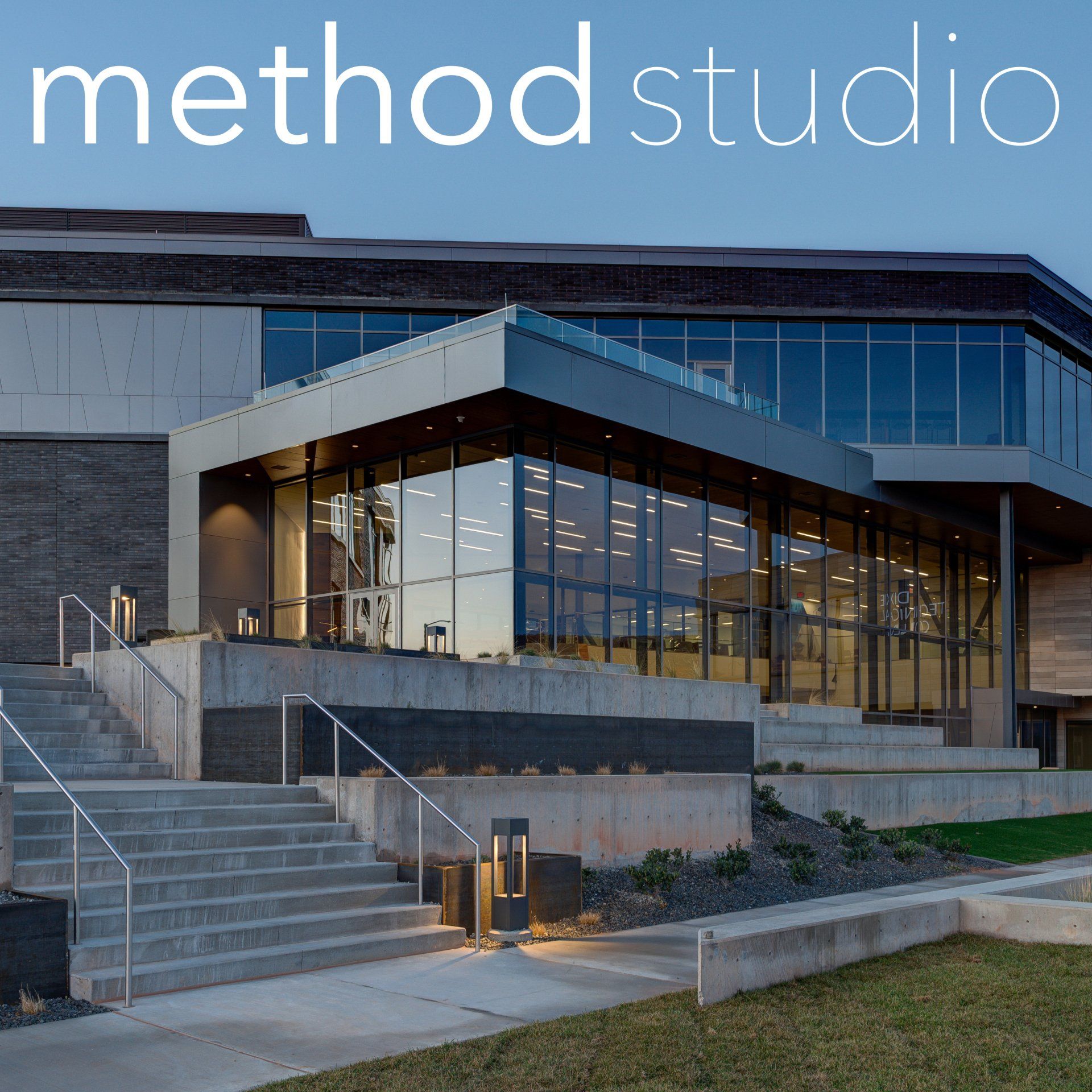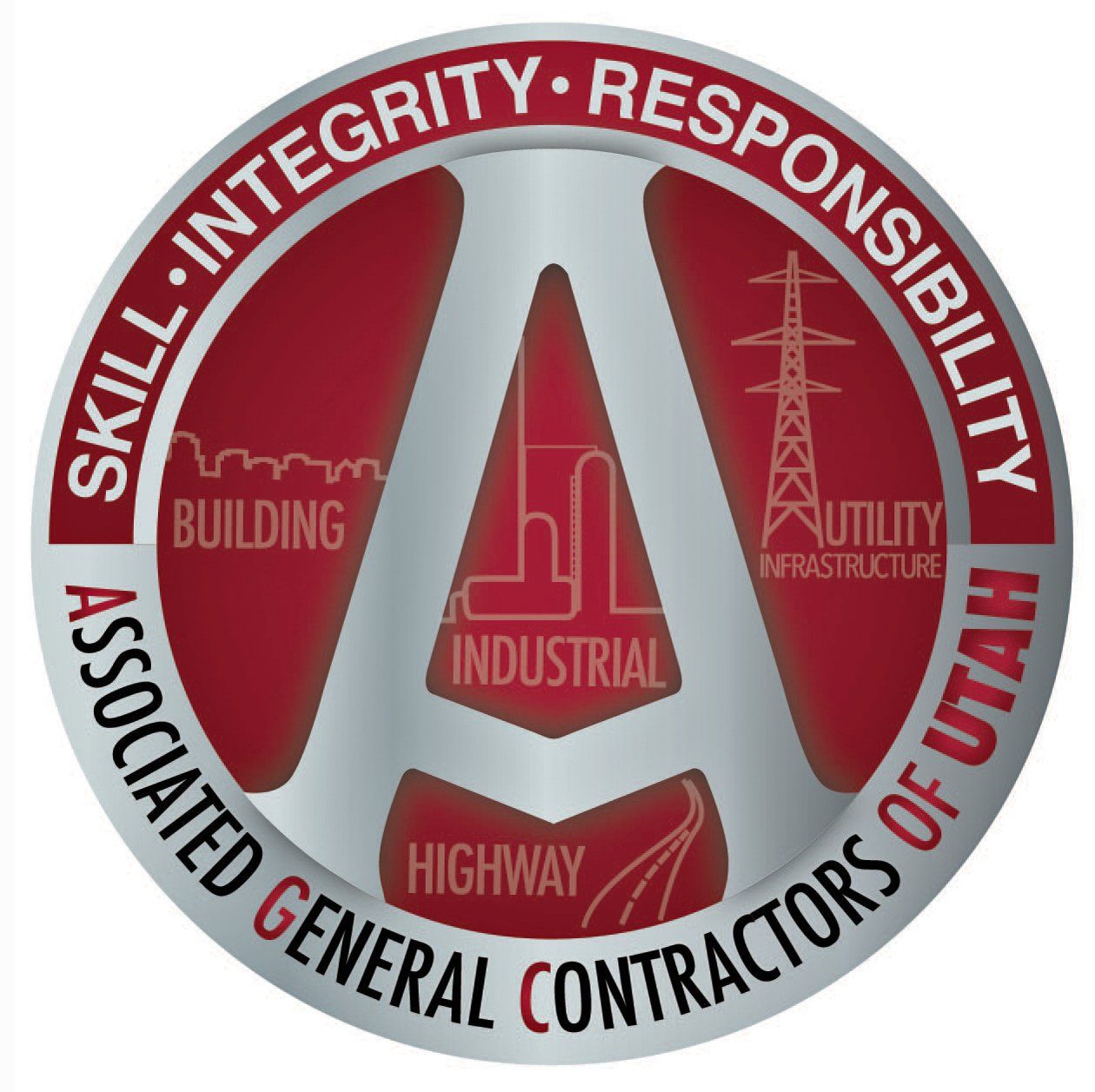People
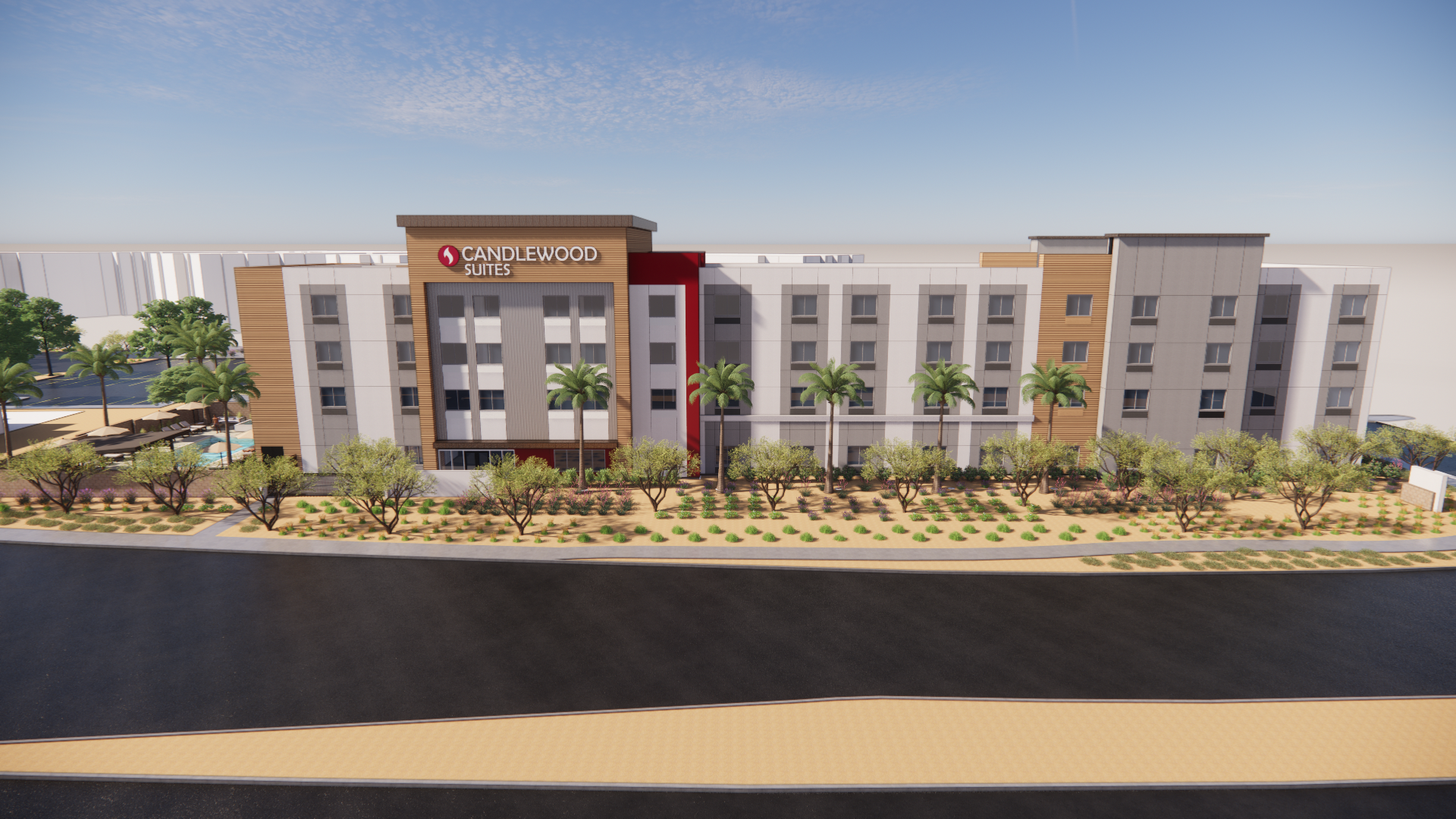
Having grown up in and around construction his entire life, Ken Holman made a shrewd decision in the 80s to pursue a career in commercial real estate development, while at the same time acting as the general contractor on his own projects. More than 45 years later, Lehi-based Overland Group finds itself excelling in both development and construction. At the same time, Ken has passed the baton to sons Dave Holman and Mike Holman, making way for second-generation leadership. Both credit their ambitious and hard-working father for setting the tone for their careers. "His tenacity is huge," said Dave, 48, President of Overland Construction, who marks 25 years at the firm this year, having earned a Bachelor of Construction Management from Brigham Young University in '99. "His expertise is invaluable to us. Being in the development space is difficult; his ability to analyze a project unemotionally is a big strength, along with his ability to push through challenges until a project gets done." "He's been a big mentor for me and Dave since day one," added Mike, 33, President of Overland Development. "It's got to the point where Dave and I run everything, but it's nice to have someone to lean on for critical decisions. Ken's value has been apparent as you go through a slowdown. He's been through four major recessions, so his mentality is that you approach problems differently." A Keen Sense for Business Ken, 75, has built his multi-faceted real estate organization into a powerhouse that offers a wide array of services, including brokerage, construction, development, financing, property management, and real estate investing through independently owned companies. He worked in construction during his formative years—his father, grandfather, and uncle were all contractors—before earning a Bachelor of Accounting from Brigham Young University, then an MBA at the University of Utah David Eccles School of Business. He soon added law school at the University of Idaho to the mix as he was "looking for more legal education on real estate," while starting Uintah Construction in 1985, followed by Overland Development in 1987. He focused on multi-family work, which continues to be a core market for the firm today, and gradually grew the company. Holman's approach to development and construction was unique: he simply planned to act as the general contractor on every project he developed, which gave him ultimate control of the one item that can make or break any job—the schedule. "I got the idea originally that we wanted to be like the big boys," said Holman upon starting Uintah Construction (which was later named Overland Construction after Holman bought Carpenter-Erickson Construction in 1999). “Then I discovered that [being a GC] is a really difficult business model. I admire anyone in the competitive bid world because there is a lot of risk associated with that, and a lot of dollars flowing through it." Ken said he wanted his firm "to focus on the construction management side of the business and be the general contractor on our own development properties. So, we've done that for several years and it's allowed us to grow and move into different markets. The best part of that is it gave us the versatility to go into any market." Ken listed six western states where the firm has developed and built projects, including Utah, Arizona, Colorado, Wyoming, Montana, and South Dakota. Arizona, in particular, has been extremely prosperous, while work in Utah is ramping up, with several key projects in the works. "The cool thing about the development company is that it has given us the ability to build some cool projects, different project types, which has given us a broader range of experience versus being a niche contractor," said Dave, listing multi-family, hospitality, retail, self-storage, and office among the firm's primary markets. Overland is known as a mixed-use developer."
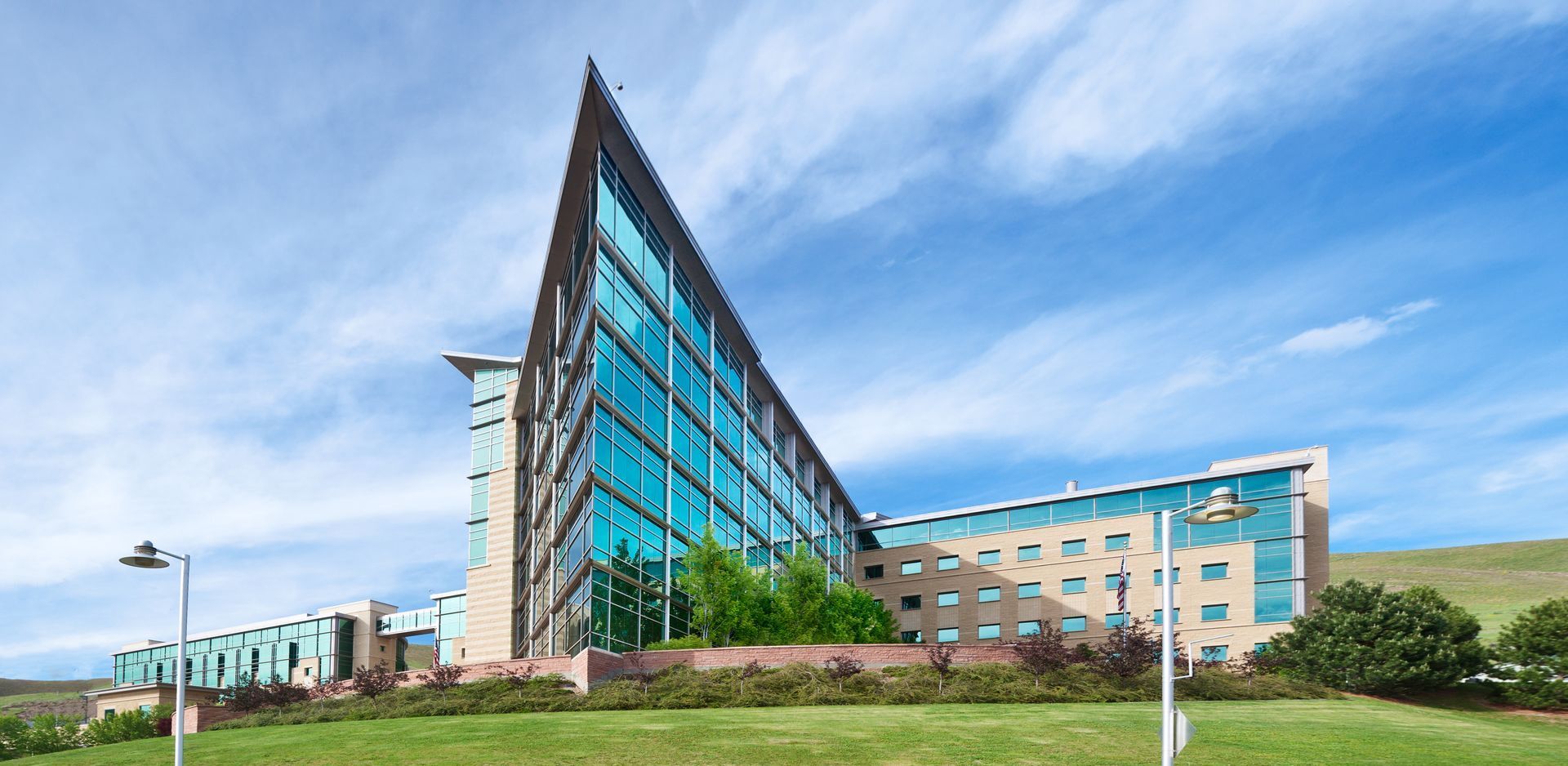
Interest in Art = Career Path to Architecture Babcock had a passion for art in high school and was intrigued by a possible career in commercial art and graphics, which led to an art teacher recommending architecture as a career with better stability and earning potential. After graduating from Pocatello High in 1956, Babcock spent a year at Idaho State. At the end of that year, the instructor counseled the young graduate to consider the University of Utah's architecture program as a superior educational option for a student of his caliber. "I went home, told my dad, and I could see him [wince]," Babcock recalled. "But he was very supportive. The University of Utah had just hired Roger Bailey as dean, and he brought instant credibility to the program." Babcock started over as a freshman at the U in the fall of 1957 with 60 others in the five-year Bachelor of Fine Arts and Architecture program and followed that up by earning a Master of Architecture from the University of California, Berkeley in 1962. Babcock and his wife, Linda, returned to Salt Lake and he worked the next few years with prominent architects including John Clawson, Don Panuschka, and Boyd Blackner. While working with Blackner, Babcock was approached by a friend who was a dentist about designing a new dental clinic. The opportunity was exciting for the young architect, until he told Blackner about it, who promptly congratulated Babcock and told him that he would design it himself. The experience left Babcock with a bad taste in his mouth. Shortly thereafter, Babcock was approached by two architect friends—Albert 'Ab' Christensen and Ralph Evans—and the trio formed Architects Planners Alliance (APA) in 1968. APA quickly landed a notable project, a renovation of historic Trolley Square in Salt Lake, which later became the location of the firm's office. Another prominent long-time client came about a couple of years later when Kem Gardner of Salt Lake-based The Boyer Company contacted the firm about a project directly across from Trolley Square. "Because we were so close to the site, I think he saw some benefits having someone working on the project who was across the street," said Babcock. "He was happy how it turned out, and through him, I met Roger [Boyer]. Kem has been wonderful to the firm, as well, with ongoing work."
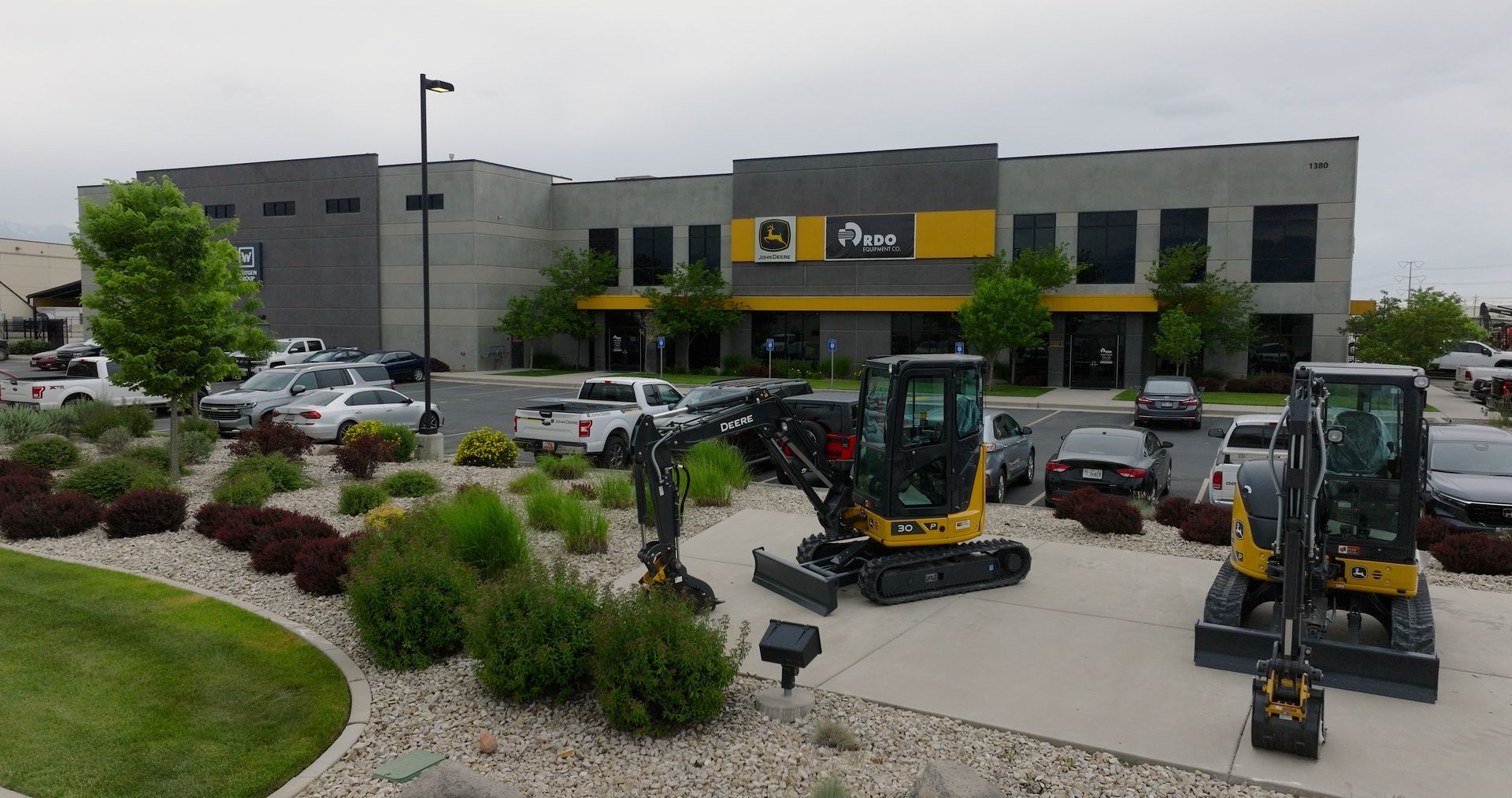
UC+D: Why did RDO move into the Utah market and what business moves has the firm made recently in addition to the Honnen acquisition? Anderson: The opportunity to expand into Utah—along with eastern Idaho and Wyoming—presented itself at the right time, and we were thrilled to be able to make it work and add eight stores in markets adjacent to ones we have been working in for many years. RDO now operates three construction equipment stores in Utah. After last month’s acquisition of Rocky Mountain Transit and Laser, we've expanded our construction technology services. As a close partner with Topcon, we're eager to bring time-saving technology solutions to Utah contractors building on the success we've experienced in states across RDO's footprint. UC+D: What have you enjoyed about the Utah market so far? Anderson: For many years we have grown our business, particularly the construction side, within the confines of our existing geographic territory. RDO leaders and team members are excited for this opportunity to expand and serve customers working and living in Utah. The Utah team welcomed us in, and we are certainly eager to be a part of this diverse and growing market. Utah’s large aggregate, mineral, and roadbuilding sectors, among many others, fit perfectly with RDO’s strong partnership with Wirtgen equipment and technology, not to mention John Deere’s construction expertise. UC+D: What areas of the business need improvement? Anderson: Our top priority early on has been expanding our service capabilities by recruiting and investing in more service technicians and adding more field service vehicles. Beyond that, we’re also working to increase our inventory, including parts and rental machines, while continuing to develop our entire team in the region and integrate RDO’s broader best practices and resources. RDO team members can connect to the company's vast network, so different communities can benefit from shared knowledge, strong manufacturer partnerships, and 24/7 remote support. UC+D: What construction sectors are good right now? Anderson: Across RDO’s footprint, the construction market is strong. Our customers tell us they have work, and equipment or parts availability has vastly improved. When we look at Utah’s construction market, we see a lot of promising activity in sectors like aggregates, housing, infrastructure, and roadbuilding. It’s really exciting for our customers and our team members. UC+D: What are you hearing from your clients about the state of the industry? Everyone seems busy despite various headwinds (interest rates, labor, competitive environment, material fluctuations, etc.). Anderson: Utah contractors are optimistic, despite very real headwinds. Most are dealing with labor shortages and higher-than-expected interest rates. This is why we’ve focused our priorities on investing in our service teams, along with our rental and technology teams. We’re here to be a true partner to our customers, so our goal is to provide the resources our customers need to work as efficiently and effectively as possible, and that’s what we’re doing with these types of investments. UC+D: How is equipment availability right now? What items are hard to get or have long lead times? Anderson: Equipment inventories have recovered from recent years’ supply shortages. The challenges dealers across the industry faced coming out of the pandemic are behind us, like being able to find and provide the machines customers needed in a reasonable amount of time. RDO has also been able to maintain a robust parts inventory. Pair all that with the variety of aftermarket service package options we offer, and we feel really good about where we are at this point. UC+D: What are RDO's goals in terms of bottom-line sales and profitability? Anderson: RDO’s goal is always to grow and build, whether it’s team members' abilities, technology expertise, service experiences, or the overall business. Ultimately, we want to expand our presence. We want to invest in our team members and resources—focusing heavily on the service side of our business to begin—so we can provide the world-class level of service our customers depend on.
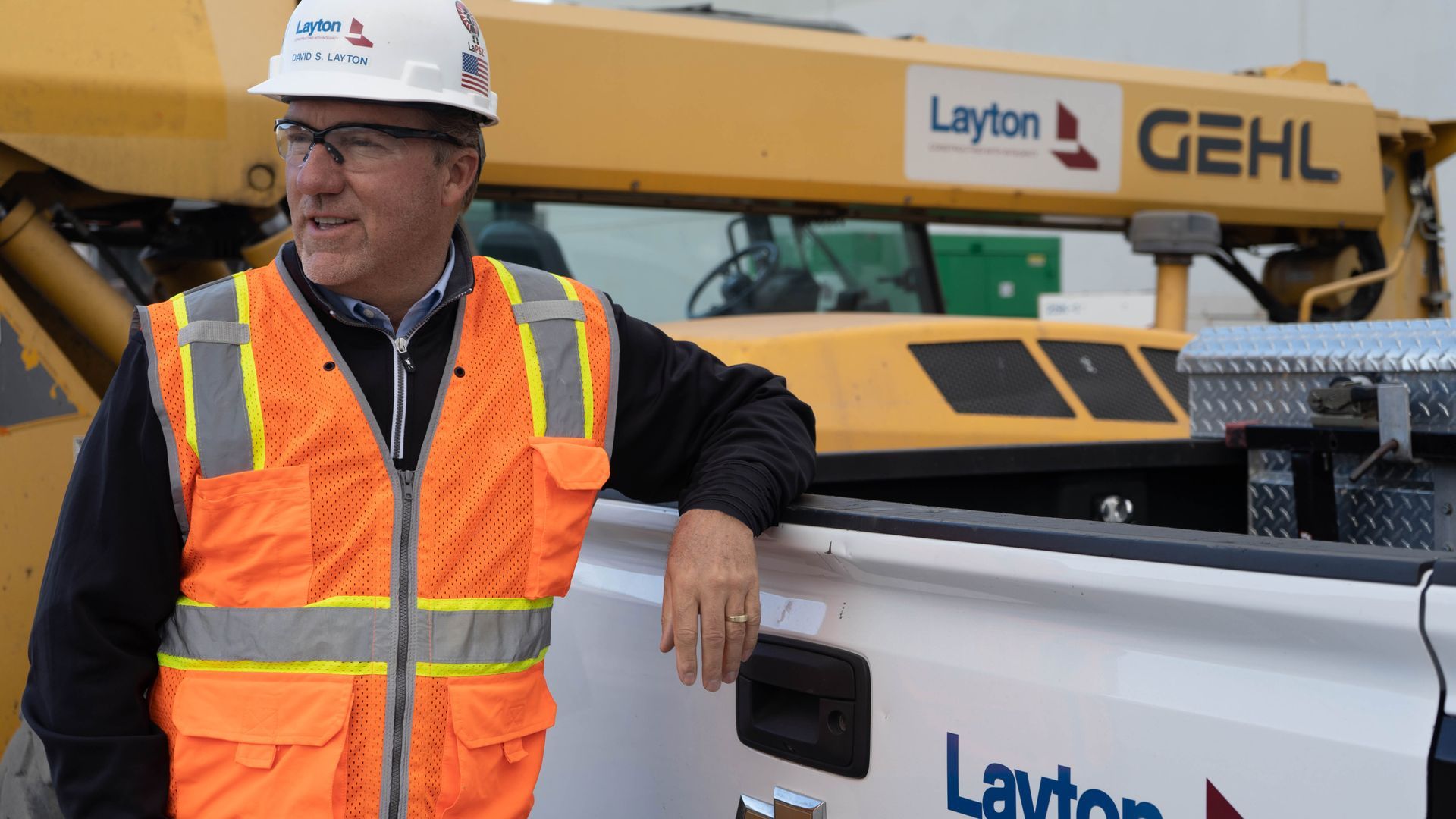
It's been a fast and furious four years for Sandy-based Layton Construction since it merged December 23, 2019, with New-York based STO Building Group (formerly Structure Tone Organization), the impetus of which came about as a way for the firm to give every employee ownership opportunity via a stock program. That was ultimately important to David S. Layton, 61, President/CEO of Layton Construction since 2004—a way for him to show his genuine appreciation to the many loyal people that have helped grow the firm from a primarily western regional general contractor into an industry-leader nationally, with ongoing projects in 27 states and annual revenues pushing the once unthinkable $4 billion mark. Layton is a unique corporate leader with all the requisite traits and characteristics needed to oversee a steadily growing company of 1,500 employees. He has a jovial, upbeat, friendly-neighbor-next-door personality, which makes him easily approachable. He's a true visionary, and he expects those working with him to be self-starters, while simultaneously coaching up employees to maximize their potential. As the youngest of 10 children, Layton grew up in the family business aware of the possibility that he'd be tasked to lead the company one day, provided he proved his mettle along the way. Father Alan W. Layton founded Layton Construction in 1953 and was a true throwback from what is commonly referred to as the "Greatest Generation"—people born between 1900-1925, many of whom valiantly fought in World War II. He was a U.S. Army Captain during WWII and led his artillery battery during the legendary Battle of the Bulge. Brother Alan S. Layton was also a valuable mentor to Layton and served as President/CEO of the company from 1985 to 2004. When Layton took over the reins from Alan, Layton Construction enjoyed status as a perennial top three Utah-headquartered general contractor, often ranking first in total annual revenues. Since that point, firm revenues have exploded ten-fold—2021 revenues were a company record $3.86 billion; 2022 revenues were $3.51 billion—gaudy numbers that just a decade ago would have seemed incomprehensible for a Utah-based contractor to hit, and, if submitted independently, would be good enough to put the firm in the 30s in ENR’s Top 400 rankings. Layton’s revenue is included with STO Building Group’s ranking at No. 5. Layton earned a Bachelor of Civil Engineering from Brigham Young University in 1988 and a Harvard Business School executive management certificate in 2000 after completing an extensive three-year program with top executives from around the world. He has served in many community capacities, including on the boards of the Utah Sports Commission, the Hale Centre Theatre, and is a current board member of the Salt Lake City Committee for the Olympic Games. Layton has also contributed significant time and money to the University of Utah as a member of the U's National advisory council, National Athletics advisory board, the College of Engineering National advisory board, and the University Healthcare Board of Trustees. Two buildings at the U even bear his name: the David S. Layton Golf Academy (opened January 2021) and the Julie M. & David S. Layton Field Club within the Ken Garff Red Zone section. David and Julie are the parents of six children and 14 grandchildren. UC&D Publisher Brad Fullmer recently conducted an exclusive interview with Layton, to get his take on the company's past, present and future, and where he sees himself in ten years. UC&D: It's been a brave new world for Layton Construction, given the merger with STO Building Group nearly four years ago. What are some of your thoughts on where the company is now, as you celebrate 70 years of construction excellence? Layton: 70 years is a long time! I give my dad a lot of credit for being willing to quit his job at the Bureau of Reclamation, and with a small, growing family say, "I'm going to start a construction business". My father had a strong work ethic—he worked as a teenager in agricultural fields, worked for the railroad. Also the youngest of 10 children (born in 1917), he was helping support his family during the Depression. He taught us to work hard. And if you love hard work, start a construction business (laughs). He picked a hard one, but he leaned into it. He knew how to bring a team together and make things happen. He was an all-state athlete, played varsity basketball at the University of Utah in the late 30s, and was a captain in the Army. He led his men across France, into Belgium as they were engaged in the Battle of the Bulge. My dad was a real leader. Part of the reason for the success of our business is his ability to lead people to accomplish great things. He had a lot of sayings, including "Say what you do; do what you say". Construction was the end game, but work was the means that got us there. And I'm still working (laughs)! UC&D: Was it a given that you would work for the family business? Layton: Of course! Construction was the family business, much like a family farm is a family business—it's what we did. It was well understood that I would go into the family business because we're builders—this is what we do! At a very young age I pushed a broom, I picked up boards as a laborer, I got exposed to many aspects of our industry as a teenager and as a carpenter. We knew that we were contractors. UC&D: While you were earning a Bachelor of Civil Engineering from BYU in the late 80s, you had the opportunity to work as an Assistant Superintendent on a Layton Construction project—a combustion lab on the BYU campus. What do you recall about that project? Layton: I had to know that project inside and out—the scope of work, the details, the schedule, the expectations of our clients, and what was important to the subcontractors. I had to be a student of the project so I could provide some leadership. It was a bit of a laboratory for me, having the luxury of a project on campus where I was getting an education. It was a smaller remodel project, but it had all the elements of a bigger project on a scale I could get my arms around and understand. I also learned a lot of language I hadn't heard before (laughs)! UC&D: After graduating, you worked full-time for Layton Construction, which had transitioned at that point to being led by your brother, Alan. What do you recall about the 90s and your first decade as a professional? Layton: Dad was still around and still in charge, but he was smart enough to start that transition process with my brother letting him take the reins of the business. When I got out of college, I moved to Nevada to work on a state prison project in Ely, which evolved into a superintendent role. In 1990, I got a phone call from my brother who said, "move back to town, you're going to be the chief estimator." I didn't know anything about estimating, but it was a fresh opportunity. At the time, we were a family-owned general contracting firm, hard bidding projects, competing on price and trying to win with strategy and relationships. Through the early 90s, the emergence of construction management (CM) at-risk began to unfold in the State of Utah. I started going out and meeting with clients and working towards negotiating projects instead of bidding projects. Throughout the 90s, my role progressed from being an estimator to being the head of preconstruction and business development—bringing opportunities in the door, getting projects priced up and transitioned to a project team. In the late 90s, one of our board members suggested I be given the responsibility for the Phoenix office—that's where I got, really, the first independent leadership role [...] and became President of Layton Southwest in 1998. That opportunity really gave me the chance to expand my leadership skills in preparation for what ultimately was the opportunity in 2004 to lead of the whole company. It was very much a progression of one day you're going to be leading the company, so let’s get you prepared for that responsibility so that you have the skills to be able to successfully lead the organization. It wasn't a gift, wasn't an entitlement, just opportunity. UC&D: You thrived professionally during your six-plus years leading the Phoenix office (1998-04) and helped the company grow substantially. How was that experience? Layton: After my first full week, I came home and told Julie, “There’s a part of me saying it's going to be the easiest thing in the world, because I know what we needed to do, but I know it's going to be really hard, because there was so much to do." We needed to grow our business and over a five-year period we went from $15 million in annual revenue to $150 million, which put us more on the map, and in the minds of clients. The ability to lead the organization was founded primarily in the minds and hearts of the people you have to lead. I had demonstrated the necessary skills so when my brother departed the business, it was natural for the employees to say, "We're in good hands." And we've spent the last 20 years demonstrating that we could do it.
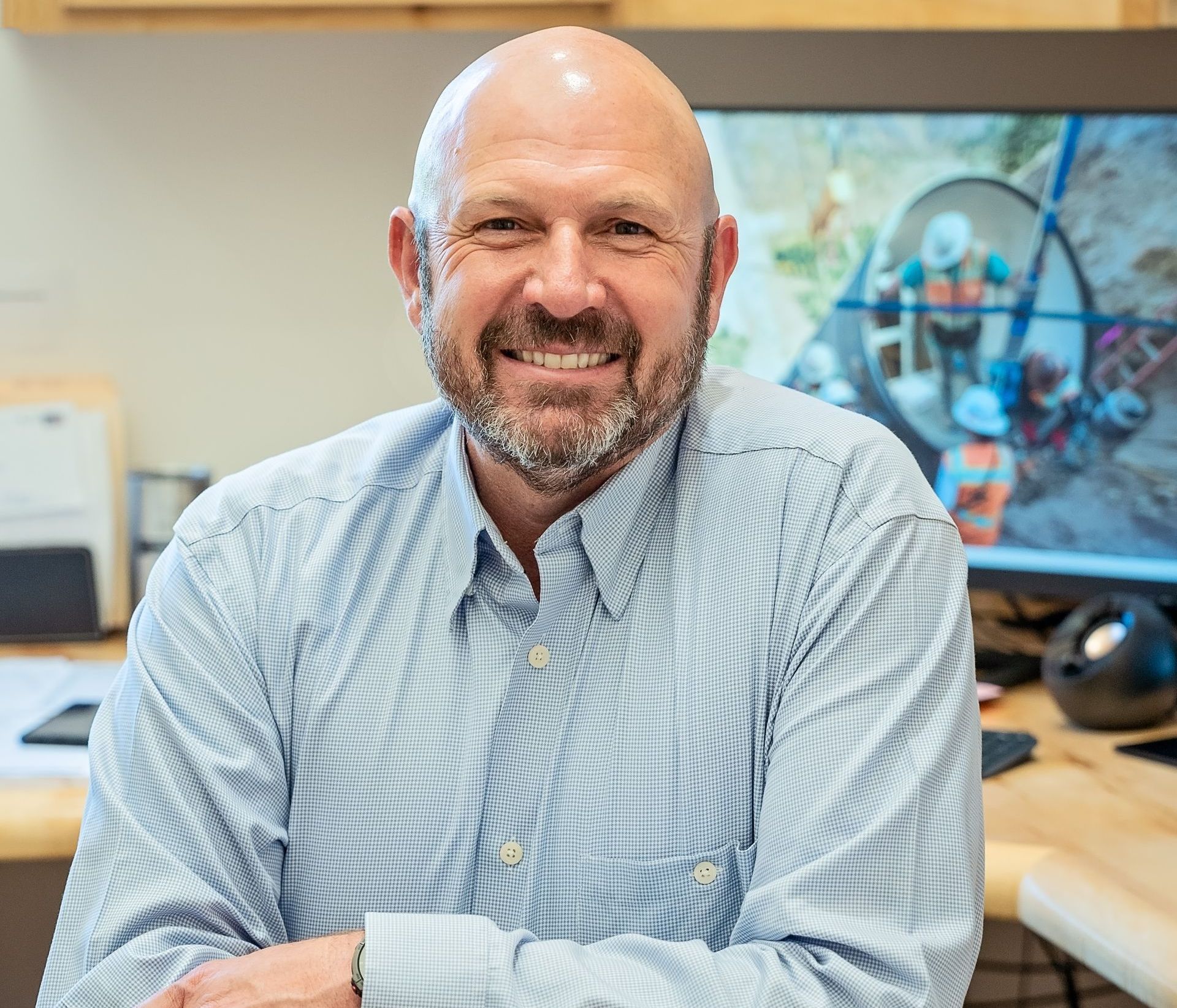
For more than seven decades, Brigham City-based Whitaker Construction has carved out its place—one methodical bucketload of dirt at a time— as one of the most capable, innovative, and hard-working firms plying its trade in the civil/municipal/utility construction arena throughout the Intermountain region. The company was founded in 1953 by Jim Whitaker, a hard-working, savvy businessman who pivoted from the sand and gravel industry to the world of underground construction and building critical infrastructure systems. Jim's three sons—Bob, Dennis, and Rick—all performed key roles for the company over their respective lengthy careers topping 50+ years. Bob succeeded Jim as President in the late 80s and remained in that role until 2003, followed by Rick, who served in that capacity from 2003-17. Bob's son Mike was the first third-generation President of the company, serving from 2017-21. As the company celebrates its 70th anniversary this year, it sees itself having firmly transitioned to the next generation of leadership, with ironically nary a Whitaker to be found on the 10-member Executive Team for the first time in its long history, led by Brett Nielsen, who was named President in 2021. Nielsen started as a laborer in 1992 and gradually learned all facets of the business and construction process, compiling an impressive industry acumen over 31 years. As the company's fifth president Nielsen is resolute in carrying on the "Whitaker Way" of doing business—which includes a focus on empowering employees and maximizing their potential. Judd Hamson is the firm's Executive Vice President with 32-plus years at the company, serving in many key roles including Project Manager, Senior Estimator and VP of Business Development. The rest of the Executive Team includes: Shane Albrecht, Sr. VP of Construction, Brandon Blanchard, VP of Heavy Civil Operations; Brent Hunziker, VP of Natural Gas Operations; Ken Hamson, VP of Water/Wastewater Operations; Dave Wickam, VP of Equipment Operations; Rex Keller, VP of Business Operations; Rhett Tatton, VP of HSE/Risk Management; Ryan Vaughn, VP of Human Resources. Whitaker has consistently been at the top of annual revenue numbers for municipal/utility general contractors in Utah, with annual revenues now eclipsing the $200 million mark and ambitious goals for consistent growth in those numbers. In the past five years revenues have more than doubled, from $109.8 million in 2018 (first time the company cracked nine figures) to $242 million in 2022. Nielsen said the company is poised to exceed $250 million this year, with a healthy backlog lined up for the next 2-3 years. Whitaker specializes in all major utility and civil infrastructure markets, including sanitary sewer, storm drain, culinary water, irrigation, earthwork, roadway construction, dams, landfills, natural gas pipelines, industrial piping, and telecommunications projects, operating primarily in seven western states—Utah, Idaho, Nevada, Wyoming, Colorado, Oregon, and Washington. UC&D: As Whitaker Construction celebrates its 70th anniversary the company finds itself having firmly transitioned to the next generation of leadership. For the first time in company history, a Whitaker is not on the Executive Team—it's a brave new world! How has the transition been? Nielsen: Mike Whitaker (who serves as CEO of Whitaker Holdings, the now parent company of Whitaker Construction that provides shared services for Whitaker Construction and other recently acquired companies) did a phenomenal job of setting up the core of the Executive Team. When I came into the role, I looked at what our strengths were and where we needed help and realized that we would need to look to the outside for those gaps within our current leadership team. I would love to be able to grow from within at every (key position), but it's not realistic given the size of our company. Whitaker has always run really lean and bringing in top executives (from outside the company) isn't culturally something we've historically focused on. We've focused more (in the past) on our craft employees, and as we have grown, realized we were doing a disservice to our company by stretching our executive and support teams too thin. UC&D: Talk about the culture at Whitaker Construction, known as the Whitaker Way. Obviously, Jim Whitaker set the tone of having a "can-do" attitude, and his sons very much continued that mindset into second and third generations of leadership. What are the keys to having a great company culture? Nielsen: We had been asking ourselves to define the Whitaker Way 10 or so years ago—and the answer we would always come up with is “it's just the way we do things around here”. How do you explain that to people looking to come into a company? Five years ago we went through our strategic planning session where the focus was to define our mission, vision and core values. The four core values we identified that summarize what the Whitaker Way is are: Value Safety, Embrace Ownership, Be Honorable, and Elevate Team. We speak to these often and post them everywhere. It's more than just words on a wall—it's actually living them. That's how we've been able to maintain our culture and still embrace outside perspectives of individuals coming onto the team. It's easy for a company to get caught up in (the mentality of) "this is the way we do things; this is the way we're always going to do things". If you get into that mindset, I don't believe you can grow. I feel like I'm much better at embracing different perspectives, as long as they support those core values. One of the things that has made us more successful the past 15 years is our ESOP (Employee Stock Ownership Plan) program. We transitioned to 100% ESOP January 1 of this year—100% of Whitaker Construction is owned by employees. It's huge! UC&D: You've been with Whitaker Construction for 27 of the past 31 years, having worked for a different company from 2004-07. Who are your most notable mentors? Nielsen: The entire Whitaker family has been extremely influential in our lives. Bob Phillips was a long-time estimator and part of the leadership of Whitaker before we had an executive team (he retired in 2006) and he was a mentor to Mike Whitaker, to Judd (Hamson), to me—Bob had a big hand in shaping the core of our company. My father (Mike Nielsen, a mechanic with the firm for 20 years) passed away in 1999 from cancer and the Whitakers, Bob and Mike especially, were there for me. Bob was very much a father figure to me; I struggled when he passed away (2021). Mike shared with me about three years ago something which brought us both to tears. He said that when my dad was ill, he went to Mike and asked him take care of me. Mike said, "I believe I've done that, Brett." It goes to show the family aspect of Whitaker Construction. I've honestly always felt like I was part of the family, part of the team and that's one of my biggest goals, to make sure everybody feels like they are part of the company and feel the same things I got from the Whitaker family. It is truly an honor—one that I do not take lightly—to follow in the footsteps of the amazing men who have held this position before me. I have very large boots to fill.

Utah’s A/E/C industry continues to churn out dozens of young, talented professionals and it’s always a privilege for us at UC&D to publish an annual section spotlighting these rising stars. This year we’re profiling five individuals with diverse backgrounds, each of whom fills a significant role for their respective firms . Our list includes: — Theresa Foxley , President/CEO of EDCUtah, a Salt Lake-based organization dedicated to helping communities with economic growth and job expansion. — Eric Dunn , Director of Business Development for West Valley City-based CMT Technical Services, a nearly 20-year-old firm renowned for its materials testing and special inspection services. — Preston Croxford , Principal Architect for Archiplex Group, who took over the eight-person firm in May when company founder Ralph Stanislaw semi-retired. — Ryan Cathey , President/CEO of Salt Lake-based Talisman Civil Consultants, a full-service civil engineering and land surveying firm that was founded in 2016. — Eman Siddiqui , an Architect with Salt Lake-based GSBS Architects and currently President and Founder of the Utah Chapter of the National Organization of Minority Architects (NOMA), which formed in July.
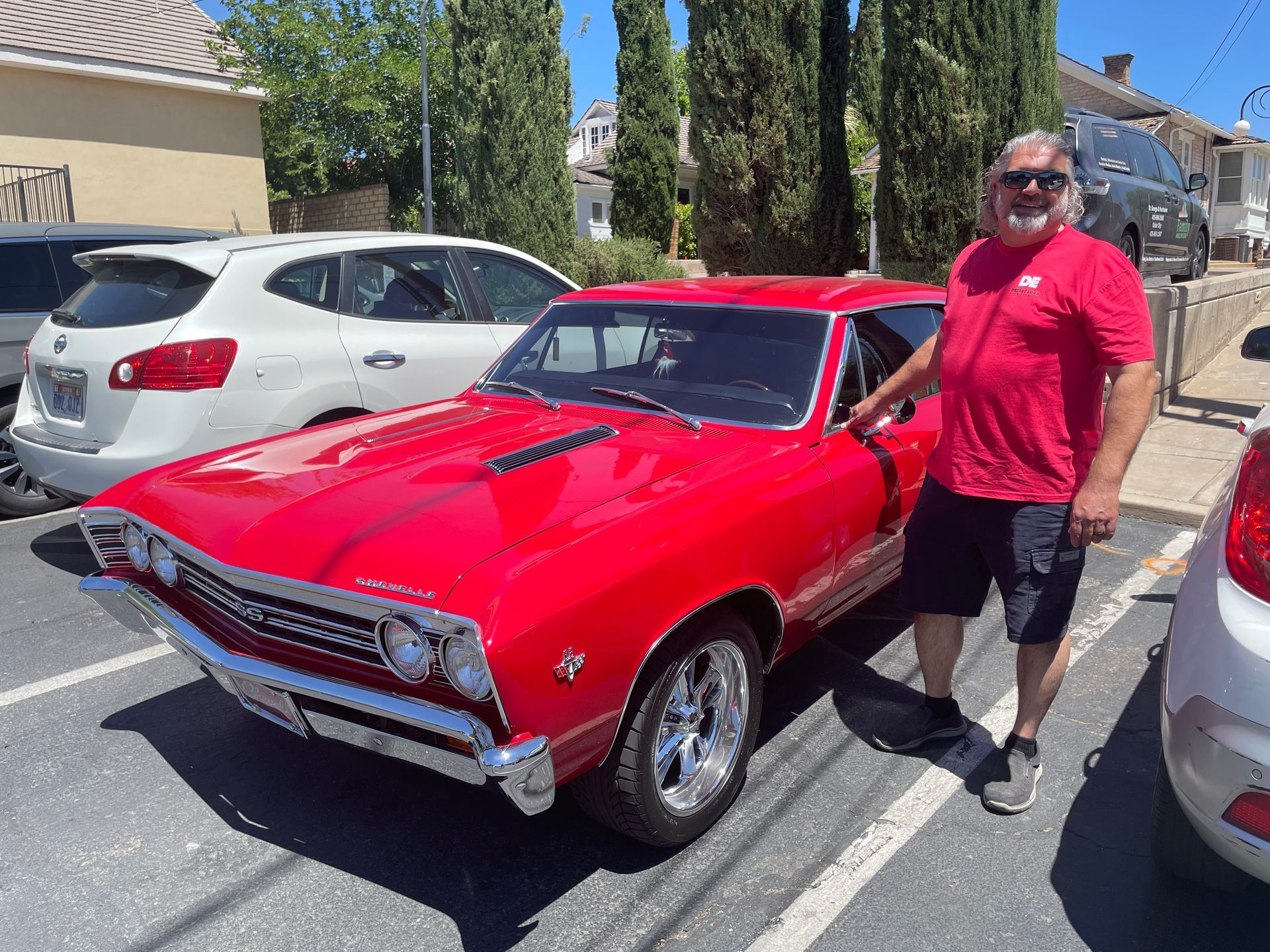
Just over a year ago, Ben Rogers completed a complex restoration of the very first car he purchased as a 17-year-old in 1984—a sleek, cherry red 1967 Chevrolet Chevelle, one of the premier “muscle cars” from the historic 1960’s automaking decade in the U.S. Rogers said he self-performed 95% of the intensive work on the car (he hired someone to paint it)—which he originally purchased for $400 from a lady in his neighborhood in St. George. It proved to be a true labor of love. “It’s been fun,” said Rogers, who started the full rebuild process in 2017, and at one point was asked by his wife, Michelle, what the budget was for this project. “I said, ‘Well, there isn’t one’. A budget just limits what you can do,” he smiled. He’s tricked out the prized automobile with all-new interiors, a new suspension, a stiffer frame, and a high-powered 6.2-liter LS3 Corvette engine. Needless to say, it hauls ass. He hadn’t driven it since 2010, so the first time he took it out for a spin down St. George Boulevard since finishing its restoration, he cranked Aldo Nova’s 1982 hit “Fantasy” (chorus: Life is just a fantasy, can you live this fantasy life?)—along with some classic Van Halen. He said he’s had it over 100 mph once but tends to keep it within the posted speed limit—usually. At the beginning of 2022, Rogers, 54, along with long-time co-worker Scott Gilberg, 46, set out building a different kind of project: founding St. George-based Desert Edge Architecture. They had spent the past 22 and 16 years, respectively, honing their craft at a prominent Utah architecture firm and felt the time was right to venture out on their own. “We joked about it for a long time, that maybe one day we’ll do it,” said Rogers of the decision they made to switch gears well into their careers and start a firm in Southern Utah’s largest city. “Those discussions would go by the wayside because we love what we do and enjoyed working together. It was just never a priority, and we didn’t need to push it.” “I had cold feet initially,” Gilberg admitted. “I got a little more confident as our client base continued to grow. I needed more confidence. It got to a point financially where I could take that risk, and I warmed up enough to the idea to where we were taking the steps necessary to make it happen.”
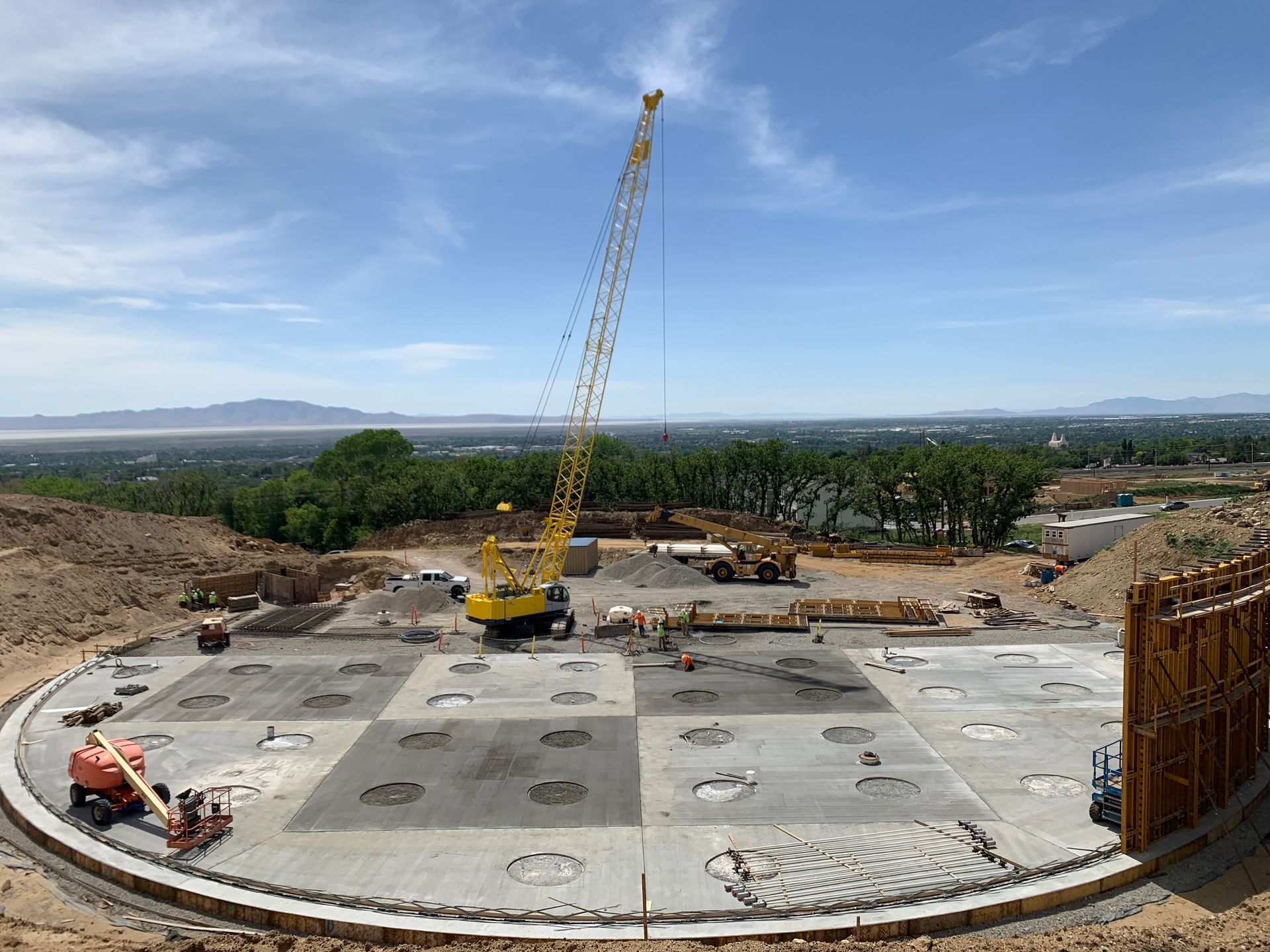
For over two decades, General Manager Tage Flint was the man steering the ship at Ogden-based Weber Basin Water Conservancy District (WBWCD). He proved to be a steady guide through explosive population growth as he oversaw dozens of vital construction projects in the five counties and nearly 750,000 residents that the district serves. Flint announced his retirement at the beginning of this year, capping a 21-year run as GM who followed his father, Ivan Flint, whose quarter-century of service included 15 years as GM from 1986 to 2001. “The time was right,” said Flint, who plans to later pick up part-time consulting work. “We joke that it’s not the age of the car as much as the miles on it. Very few people get to 21 years at this post. If I wanted a 60-hours-a-week job, I could have stayed where I was. It [was] time to do something else.” Rooted in Water The combined 45-year period of district leadership is an impressive stretch of time for the Flint father-son duo, whose familial roots run deep in Davis County, dating back to early Latter-day Saint pioneers who settled the area in 1853. The Flints even lived on Flint Street in West Kaysville, on a road named for their ancestors, including some of the earliest Davis County farmers who built canals and other early water infrastructure systems to ensure their crops would be sufficiently watered. “So many of the old water rights were held by these old pioneer water companies,” said Flint. “What farms are left are still using those same systems.” Call it destiny, but Flint was groomed from an early age to work in the water conservancy field. Ivan, who passed away in 2017, was a defense contract specialist on federal military contracts for the Dept. of Natural Resources before spending 24 years at WBWCD (1977–2001). “I grew up visiting dams and spending weekends at spillways during flood years—that certainly steered me towards that background,” said Flint, who graduated from Davis High in 1980, received a Bachelor of Civil Engineering from the University of Utah in 1987, and ultimately earned an MBA from Western Governors University in 2003. “I was one of those ‘STEM’ kids—math and science came easy and interested me, and I thought I’d do something in that field. By the time I was 15 I would work summers doing landscape work and light construction on canals and diversion structures, and it all just fascinated me—how water moved around. Most people have no idea where water comes from. There is a lot to it.” Flint worked at Jordan Valley Water Conservancy District from 1987–2001, serving under former GM Richard Bay in several capacities, including as co-GM with Bay. “He was a mentor of mine throughout,” Flint said. When Ivan was retiring, it never occurred to him to apply for the position. “I was happy at Jordan Valley. I got a call from a (WBWCD) board member if I was interested; they were looking for candidates.” During Flint’s 21 years as GM, the population in the five counties serviced by the District (Weber, Davis, Morgan, Summit, and part of Box Elder) more than doubled. Today, WBWCD delivers 230,000 acre-feet annually to customers, including every city in Davis and Weber counties sans North Ogden. “The corresponding demand for drinking water has gone up,” said Flint. “Development, policy, water rights and infrastructure have grown exponentially and in complexity in that time. It really is a different place. We have twice as many employees—everything has been in accelerated growth mode.” WBWCD, which was established in 1950, has done a “tremendous amount of work on aging infrastructure,” Flint added, with seven major storage reservoirs along the Ogden River and Weber River as part of its stewardship, along with three hydro-power generation plants, 21 wells, four water treatment plants, and hundreds of miles of canals, tunnels, aqueducts, and pipelines.










